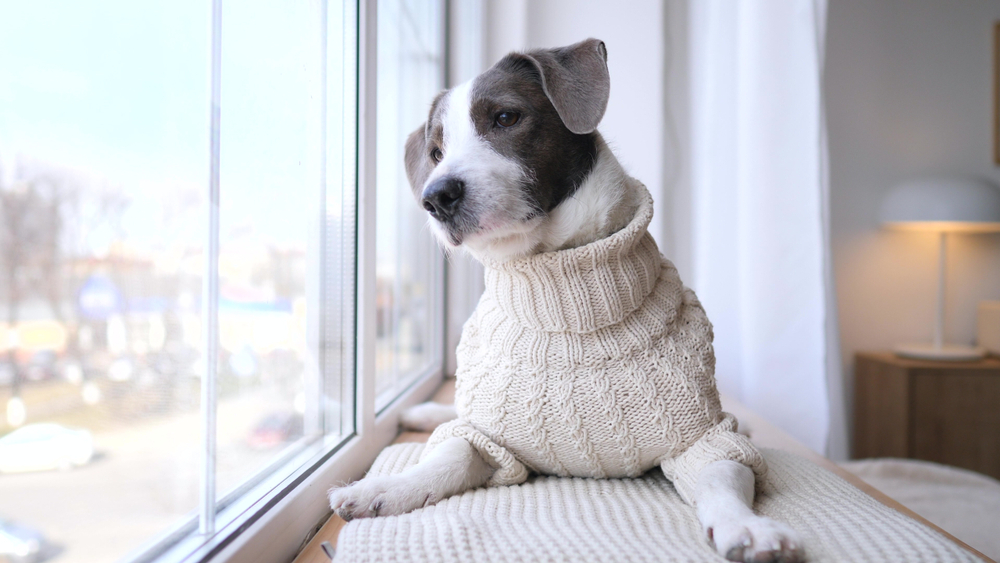Are you dealing with separation anxiety in a puppy?
When you first bring your new puppy home, we recommend that you take time off work—or work from home—for at least the first week. Your home is a strange place for your new friend. Mom and siblings aren’t here; unfamiliar sights, smells, and sounds are everywhere, and while you love him very much, your puppy is just getting to know you.
When you do first begin spending an hour or two apart, your puppy may spend five to ten minutes crying for you, searching for you, and displaying concern. After a short while, your puppy should find himself distracted by his toys, a nap, or even his own tail.
When to Worry
If, on the other hand, your puppy exhibits severe, prolonged distress, he may be experiencing true anxiety. While unusual, this condition is something to take seriously. Behaviors to watch out for, especially when they occur together, include:
- Shaking, whining, howling, barking, and pacing
- Panting, drooling, or salivating continually
- Potty accidents (notable only once potty training is complete)
- Refusal to eat in your absence, even when high-value treats are left for him
- Ignoring toys and his bed
- Clawing and scratching around doors, windows, or baby gates
- Desperate, repeated escape attempts, which may even result in injury
As you can see, true separation anxiety looks very different from the behavior of a dog who is bored, left alone for too long, or is still learning how to behave in your absence.
How to Help
The best steps toward preventing separation anxiety are the fundamentals of being a good owner for your puppy: exercise, playtime, crate training, obedience training, socialization, and independence training.
Still, there are specific steps we can recommend to treat severe separation anxiety. Before beginning this process, we suggest installing a camera that allows you to check in on your puppy from your phone. This will help you execute the following steps with more accurate timing.
Desensitization and Counter-Conditioning
Your puppy can gradually learn that you leaving her alone isn’t anything to fear—in fact; great things will happen when you leave the home.
If your puppy has already associated you leaving with items like your coat, your bag, or your shoes, counter-conditioning comes first. Put on your coat, hold your bag, put on your shoes, then do something mundane like the dishes, dusting, or talking on the phone.
After some time has passed, remove the triggering items without fanfare and continue your mundane tasks. Repeat this often throughout the day until these items no longer provoke a panic response in your puppy.
Next, you’ll tackle building tolerance to separation.
At first, you’ll offer your puppy a high-value treat, then step out of view for just a short moment. Upon your return, do not greet your puppy, make high-pitched noises of excitement, or make eye contact. Instead, make no fuss, and go about your business as usual.
Repeat this process until your puppy can stand being alone for a few minutes. At this point, you’ll offer a treat, then use the restroom quickly while your dog remains either crated, or on the opposite side of the restroom door. Remember to keep your return uneventful.
Next, you’ll spend a few minutes on the front porch. After that’s a piece of cake for your puppy, you’ll walk down and check the mail.
Continue this same process while gradually increasing your time apart.
Need Help?
If crate training, desensitization, and counter-conditioning aren’t enough to ease your puppy’s panic at your absence, it’s time to bring in some help. First, start with a visit to your vet to rule out health issues that could be contributing and find out if medication might be warranted.
Next, reach out to us at All Dogs Unleashed. We’re here to help you and your puppy achieve happiness and confidence, even when you’re apart.



